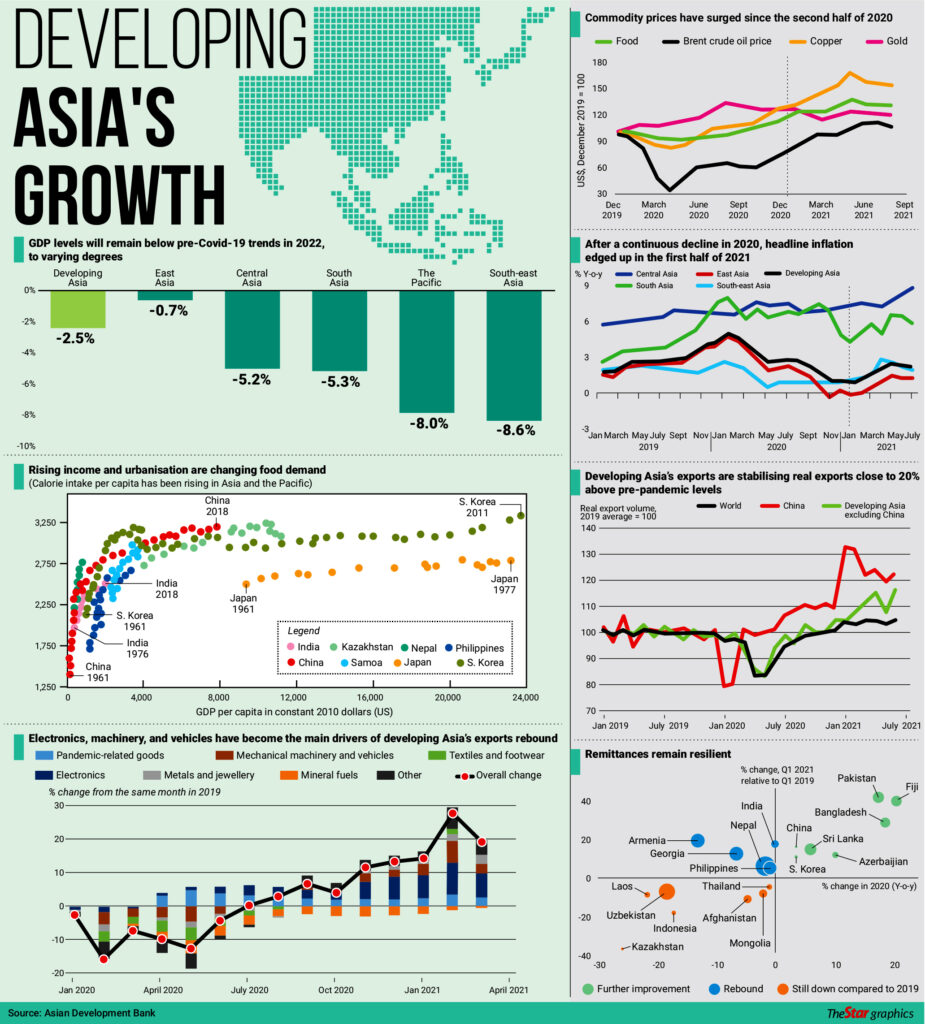The Association of Southeast Asian Nations (ASEAN) looks forward to the implementation of the ASEAN Investment Facilitation Framework (AIFF) to facilitate the inflow of investment into the region as ASEAN steps up its efforts towards a comprehensive recovery.
Among others, the framework is intended to improve accessibility and transparency of investment measures, streamline and speed up administrative procedures and requirements, and create favourable conditions for investment in the region.
“This is with a view to enhancing regional economic integration and allowing ASEAN to capture opportunities presented by shifts in global value chains, as well as delivering tangible benefits to stakeholders,” said ASEAN chairman Sultan Hassanal Bolkiah.
Sultan Hassanal Bolkiah of Brunei has chaired the 38th and 39th ASEAN summits held on Oct 26 via videoconference.
He said ASEAN also welcomed the entry into force of the ASEAN Trade in Services Agreement (ATISA) and looked forward to the timely implementation of the agreement.
Cognisant of the need to further streamline work on addressing non-tariff measures in order to facilitate trade flows in the region, Brunei welcomed the endorsement of the NTM Cost-Effectiveness Toolkit (NTM Toolkit), which aims to promote the adoption of good regulatory practices of simplifying import requirements and procedures to ultimately boost exports in the region.
“We also recognised efforts to facilitate the movement of trade in goods within the region and commended relevant officials for putting in place digital-based trade facilitation platforms.
“Encouraged by these positive developments, we looked forward to the full participation of other ASEAN member states in these initiatives.
“We also looked forward to the end-to-end test of the electronic Phytosanitary (e-Phyto) Certificate between Indonesia and Thailand in 2021.
“We urged all ASEAN member states to intensify efforts in further enhancing trade facilitation in the region through initiatives such as the ASEAN Authorized Economic Operator (AEO) Mutual Recognition Arrangement (AAMRA) on a pathfinder basis.”
Sultan Hassanal Bolkiah said Brunei welcomed the finalisation of the mid-term review of the ASEAN Strategic Action Plan for SME Development 2016-2025 (SAP SMED 2025), the second phase of the SAP SMED 2025 implementation focusing on key elements to support micro, small and medium enterprises (MSMEs), as well as the progress made on this front, especially in facilitating MSMEs to build back better post-pandemic.
“We welcomed the launch of the ASEAN Access, which serves as a one-stop business information gateway for international-oriented businesses and the continuous effort to improve the ASEAN SME Academy.
“We encouraged the business communities in ASEAN and beyond to make full use of these resources and welcomed collaboration to strengthen ASEAN’s resources for its MSMEs,” he said.
Brunei looked forward to the finalisation of the high-level guidelines on MSMEs crisis disaster and resilience as well as the implementation of the ASEAN Collaboration Framework towards Strengthening Evidence-based MSMEs Policies.
Brunei also welcomed the initiative by the ASEAN Finance Ministers and Central Bank Governors Meeting (AFMGM) to develop an ASEAN Taxonomy for Sustainable Finance (ASEAN Taxonomy), which will be the overarching guide for all ASEAN states, complementing their respective national sustainability initiatives and serving as ASEAN’s common language for sustainable finance.
It also supported the establishment of the ASEAN Taxonomy Board (ATB) to develop, maintain and promote a multi-tiered taxonomy that will take into account ASEAN’s needs as well as international aspirations and goals.
“We recognised the importance of cross-sectoral coordination in the development of an ASEAN Taxonomy that can be adopted by ASEAN businesses and we noted the development of the ASEAN Taxonomy that will be announced at the COP26 in November 2021”.
Sultan Hassanal Bolkiah said in supporting the regional economic recovery, Brunei reaffirmed and underscored the importance of keeping markets open, maintaining supply chain resilience, supporting MSMEs and increasing trade inter-linkages.
“In this regard, we noted the progress in the implementation of the ASEAN Plus One Free Trade Agreements (FTAs) with Australia and New Zealand, China, Hong Kong, India, Japan, and South Korea as well as negotiations and discussions on the upgrade of some of the FTAs.
“We welcome the full entry into force of the ASEAN — Hong Kong, China FTA and the ASEAN — Hong Kong, China, Investment Agreement.
“We reiterated our resolve to ensure that the Regional Comprehensive Economic Partnership (RCEP) remains to be ASEAN-led and driven.”
Brunei therefore, according to Sultan Hassanal Bolkiah, underlined its commitment to expedite the ratification process for the RCEP Agreement and looked forward to its entry into force in early January 2022.
Brunei also reaffirmed its commitment to an open, free, fair, inclusive, transparent, rules-based, and non-discriminatory multilateral trading system centred on the World Trade Organisation.
Source: Bernama
ASEAN looks forward to implement framework to facilitate investment inflow
Content Type:
Duration:



